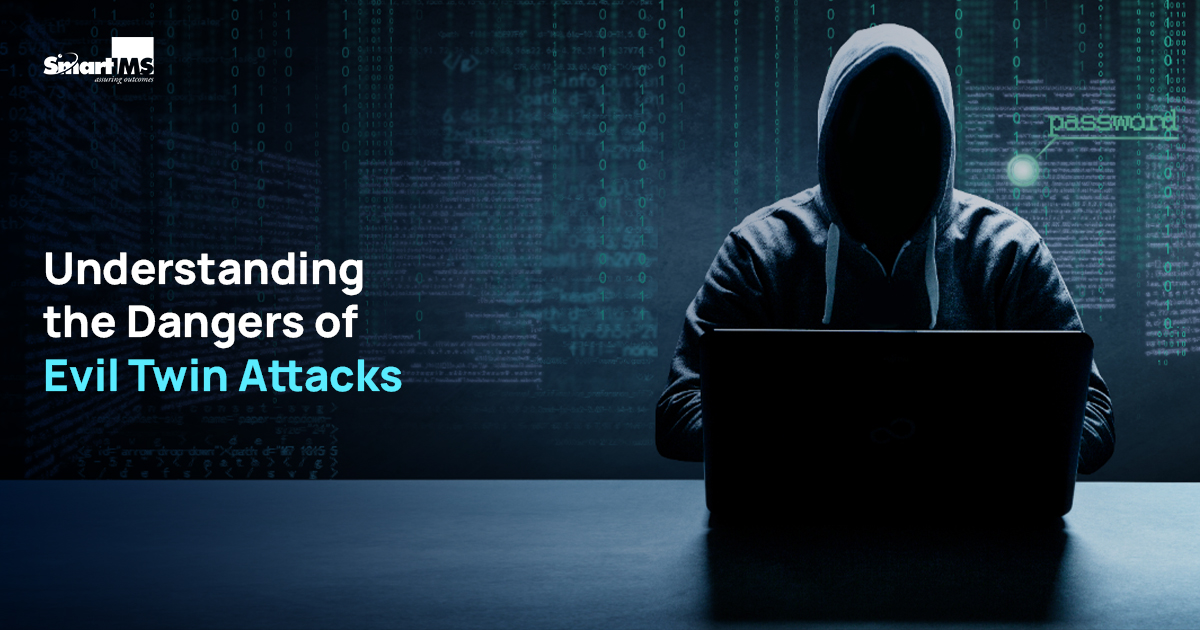An evil twin attack is a sophisticated cybersecurity threat where an attacker imitates a legitimate network. This primarily occurs because most Wi-Fi authentications require only two inputs: the SSID (Service Set Identifier) and a pre-shared key (Wi-Fi name and password). Attackers create an identical SSID and pre-shared key, successfully mimicking the legitimate network. Devices often auto-connect to previously used networks with matching SSIDs and passwords, especially within a short range.
Simulation
This attack can be executed with relative ease. Below are the steps involved in the simulation:
- Network Configuration:
- In this demonstration, we utilized a mobile hotspot and configured its SSID to match the organization’s Wi-Fi network, “SIMS_ADMINS.”
- The hotspot’s password was also set to replicate the original “SIMS_ADMINS” password.
- Device Connection:
- Upon reconnecting a device to the SIMS_ADMINS network, the corporate device seamlessly connected to the simulated network we had created.
- Rogue Access Point Confirmation:
- The mobile hotspot, acting as the rogue access point, confirmed that the corporate device was successfully connected to our simulated network.
- Additional Connections:
- This test was conducted in the Security Operations Center (SOC) room. As a result, two or three additional corporate devices powered on during this time automatically connected to the simulated network due to their configuration to auto-connect to the original SIMS_ADMINS network.
Consequences/Disadvantages
- Traffic Interception: The attacker can intercept all traffic transmitted through the network, including sensitive information. This stolen data can be exploited to access the organization’s confidential systems.
- Exposure to Phishing and Malware: Attackers can redirect users to fake websites that appear legitimate, deceiving them into entering sensitive information. Malware can also be deployed through the compromised network to access otherwise restricted databases.
- HTTPS Traffic Vulnerability: During the Evil Twin attack, the attacker can disable HTTPS traffic, leaving the user without encryption when accessing web pages. This enables the attacker to easily read contents such as Microsoft Teams messages, emails, usernames, passwords, and financial information.
Recommendations
- Implement Corporate Authentication: In addition to requiring an SSID and password, organizations should implement corporate authentication mechanisms such as:
- Certificates
- Multi-factor authentication (MFA)
- 802.1X authentication protocols
- User Awareness Training: Conduct training sessions to educate users about the risks of connecting to untrusted Wi-Fi networks and recognizing potential phishing attempts.
- Device Configuration: Ensure devices are configured not to auto-connect to unknown networks without user approval.
- Regular Network Monitoring: Employ tools to monitor and detect rogue access points in real-time.
- Use Encrypted Connections: Encourage users to always verify HTTPS connections and use VPNs for secure communication when on public or potentially unsafe networks.
By adopting these preventive measures, organizations can significantly reduce the risk of falling victim to an evil twin attack.




